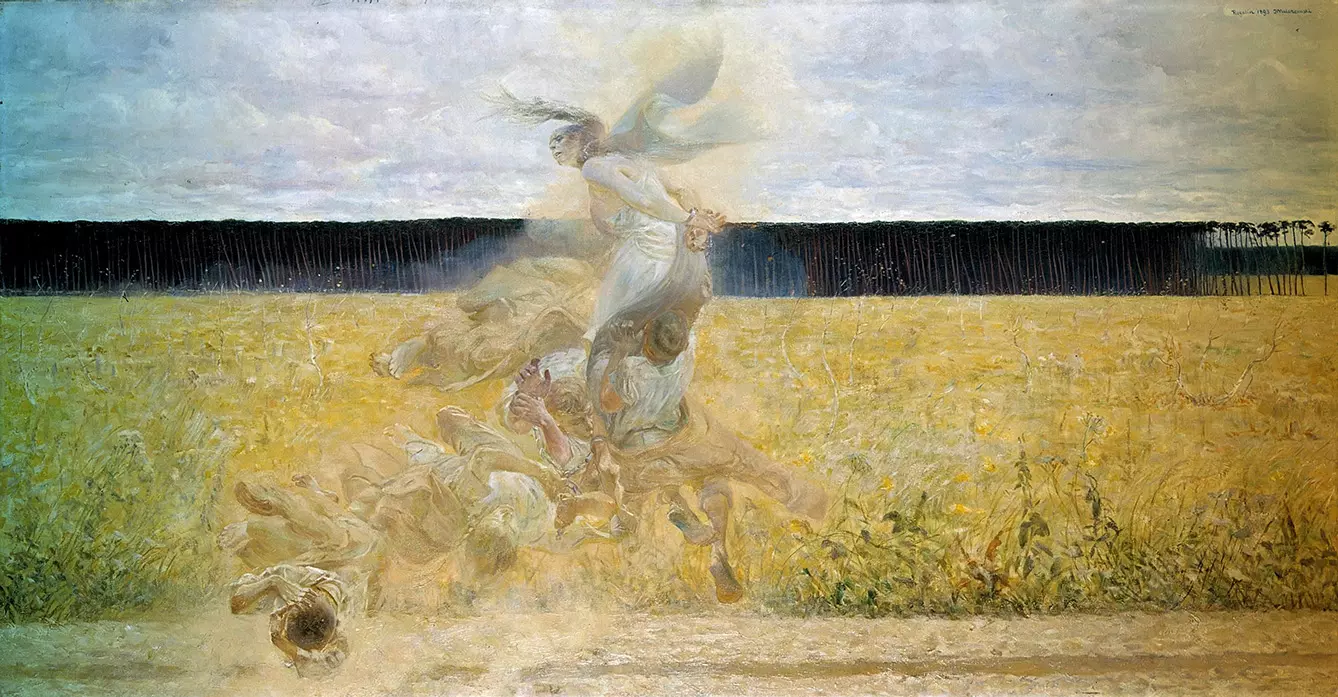Slavic demonology used to be so rich that it could put to shame the efforts of both John R. R. Tolkien and George R. R. Martin. (*Though it’s worth noting that Poland’s Andrzej Sapkowski took a shot in “The Witcher,” and it still took him seven books to remix only a fraction of it). Maybe it’s not the right place to describe all the undead from Poland, Lithuania, West Ukraine, Silesia, and farther to the south.
Why is that? As one modern Polish historian and publicist Łukasz Kozak claims, we all got the pagan history of his part of Europe wrong. We are being taught in schools that the people from around the Vistula, Dnipro, Neman, and Vltava Rivers were pagan in the Roman sense – polytheistic, with gods “responsible” for different areas of world cycle and human life, for farming and art, seasons and weather, life and death.
But maybe the supernatural catalog sheds a different light on it: belief in the undead, in supernatural forces able to resurrect the dead in changed form, as well as honoring natural phenomena meant that Slavs were other kinds of pagans – the animistic ones. With no personal god but “supernatural” world phenomena – thunders, fire, vegetation – worshipped directly, not by their divine incarnations.
Slavic folklore has provided fertile grounds for belief in the paranormal. You don’t even have to take our word for it. Just look at Poland’s Andrzej Sapkowski, who created a veritable wonderland of supernatural machinations in his “The Witcher” series, parts of which were unquestionably inspired by local ghost stories. And those stories – not necessarily resurrected, as in the case of “traditional” polytheistic religion, but never dead, still haunt folk culture.
The Fearless Vampire Slayers
The recently found “vampiric” burial in Northern Poland contained a corpse fixed to the ground by a sieve. Technically, it could perhaps be called upiór, a wraith, an undead that can harm you or your livestock. And the sieve was supposed to keep her from rising from the grave.
And this particular creature was buried in a silk cap. On one hand, the silk cap was likely a status symbol. However, it also may have alluded to the person having been born en caul. It is a rare form of childbirth where the child is born with the amniotic sac intact.
Some say that being born en caul is a sign of luck, and even today, Poles use the phrase “w czepku urodzony”, aka – “born in a cap,” to mean someone’s string of good luck. However, in Polish folk tradition, this peculiar kind of birth indicated that the child was bound to become a ghost or other supernatural creature after their death. They could live their whole life with regular social relations but would still be buried with additional security measures just in case.
People in some parts of rural Poland, especially in the east, have for a long time believed (*some even still do) in supernatural activity. And yes, this belief easily coexists with the folk edition of Christian theology introduced and proliferated by the church. So, protection has always been key, hence the infamous wooden stakes, iron spikes, religious symbols, and all the objects and practices that could be associated with annihilating the undead.
And if you hear the stories, boy, was protection needed. The belief held that such demons could make you suffer, go crazy, or kill your children. They could also mess with your business, like making your cow give sour milk or killing your cattle. They could also just give you plain ol’ bad luck – you name it, they can do it.
Too many creatures to choose from
One more of the main supernatural specimens is the strzyga, which, according to some sources, would sit on the chest of a toddler, causing sudden infant death syndrome. There was also the południca (the noon wraith) which would attack and then drive crazy any person foolish enough to fall asleep at noon on the border. (*A border – like one between fields, possessions, or village-to-wilderness border, is a symbol in itself).
There were mares (zmory), flying wraiths (latawce), werewolves, and ghosts, and anyone who encountered them was at risk of turning into one – or worse. A Wodnik was a water spirit – that would guard the river or lake but could as well capture you to his underwater prison. There were forest dryads, werewolves and even a dragon – the latest possibly imported with some Celtic influence.
And also witches, let’s not forget about them. Maybe without the cauldron, but maybe with a cat. A Polish wiedźma is not a sorcerer but, originally, “one who knows.” What does she know? Well, some folk medicine, perhaps? And maybe she can tell the future just by looking at things as they are.
Efforts to compile these supernatural creatures into a single “Slavic demonology” are interesting but historically and anthropologically dubious, as this was folklore rather than a system of beliefs. Hence, all here is to be treated as an educated guess unless otherwise proven.
Still, with an extensive catalog and several special occasions marked as times of supernatural activity (such as proximity to solstices), there’s much more Halloween inspiration in Central Europe than in Dracula’s Transylvania alone.







